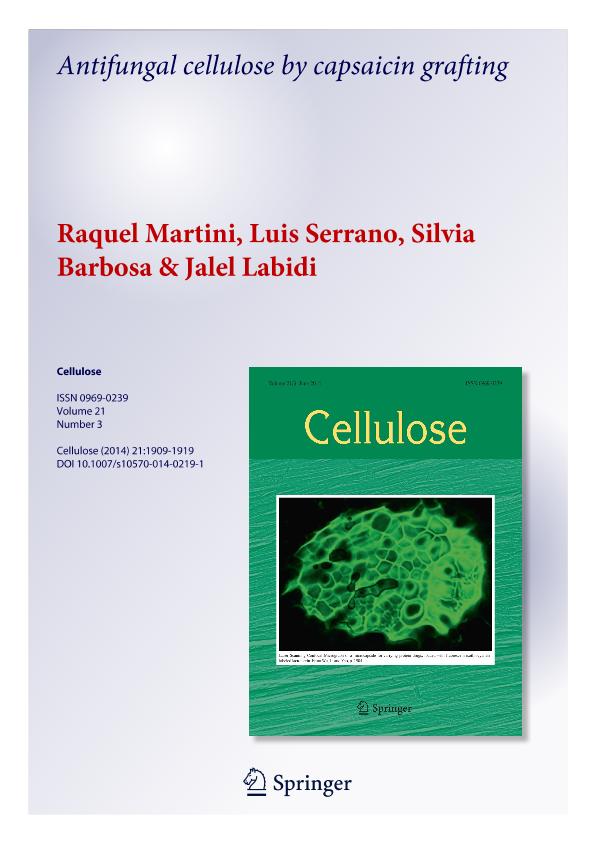Artículo
Antifungal cellulose by capsaicin surface grafting
Fecha de publicación:
05/2014
Editorial:
Springer
Revista:
Cellulose
ISSN:
0969-0239
e-ISSN:
1572-882X
Idioma:
Inglés
Tipo de recurso:
Artículo publicado
Clasificación temática:
Resumen
Cellulose is one of the most abundant materials in nature. Besides its biological function, cellulose can be extracted from the cell wall and used in several industrial applications. Thus, it can be used in papers, pharmaceuticals, food, cosmetics and innovative materials such as nanocomposites, packaging, coatings and dispersion technology. With the aim of extending cellulose applications and producing so-called “smart” materials, new functionality can be introduced by physical or chemical modifications. Taking into account that capsaicin, the active component of chili peppers, is an excellent antifungal agent, a potential new material could be obtained by chemical reaction between this active compound and cellulose. In this work, capsaicin grafting onto cellulose using polycarboxylic acid as linking agent is proposed. The reaction occurrence was corroborated by Fourier transform infrared spectroscopy and UV–Vis spectrophotometry in reflectance mode. Modified cellulose with <2 wt% of capsaicin shows a strong change in antifungal activity with respect to the unmodified one. This activity was evaluated by the fungal growth inhibition test with two different fungi, Trametes versicolor and Gloeophyllum trabeum. Modified cellulose samples showed a high percentage of fungal growth inhibition, demonstrating the success of the cellulose modification and high antifungal power of the grafting molecule.
Palabras clave:
Cellulose
,
Grafting
,
Capsaicin
,
Antifungal Activity
Archivos asociados
Licencia
Identificadores
Colecciones
Articulos(CCT - BAHIA BLANCA)
Articulos de CTRO.CIENTIFICO TECNOL.CONICET - BAHIA BLANCA
Articulos de CTRO.CIENTIFICO TECNOL.CONICET - BAHIA BLANCA
Articulos(PLAPIQUI)
Articulos de PLANTA PILOTO DE INGENIERIA QUIMICA (I)
Articulos de PLANTA PILOTO DE INGENIERIA QUIMICA (I)
Citación
Martini, Raquel Evangelina; Serrano, Luis; Barbosa, Silvia Elena; Labidi, Jalel; Antifungal cellulose by capsaicin surface grafting; Springer; Cellulose; 21; 3; 5-2014; 1909-1919
Compartir
Altmétricas




